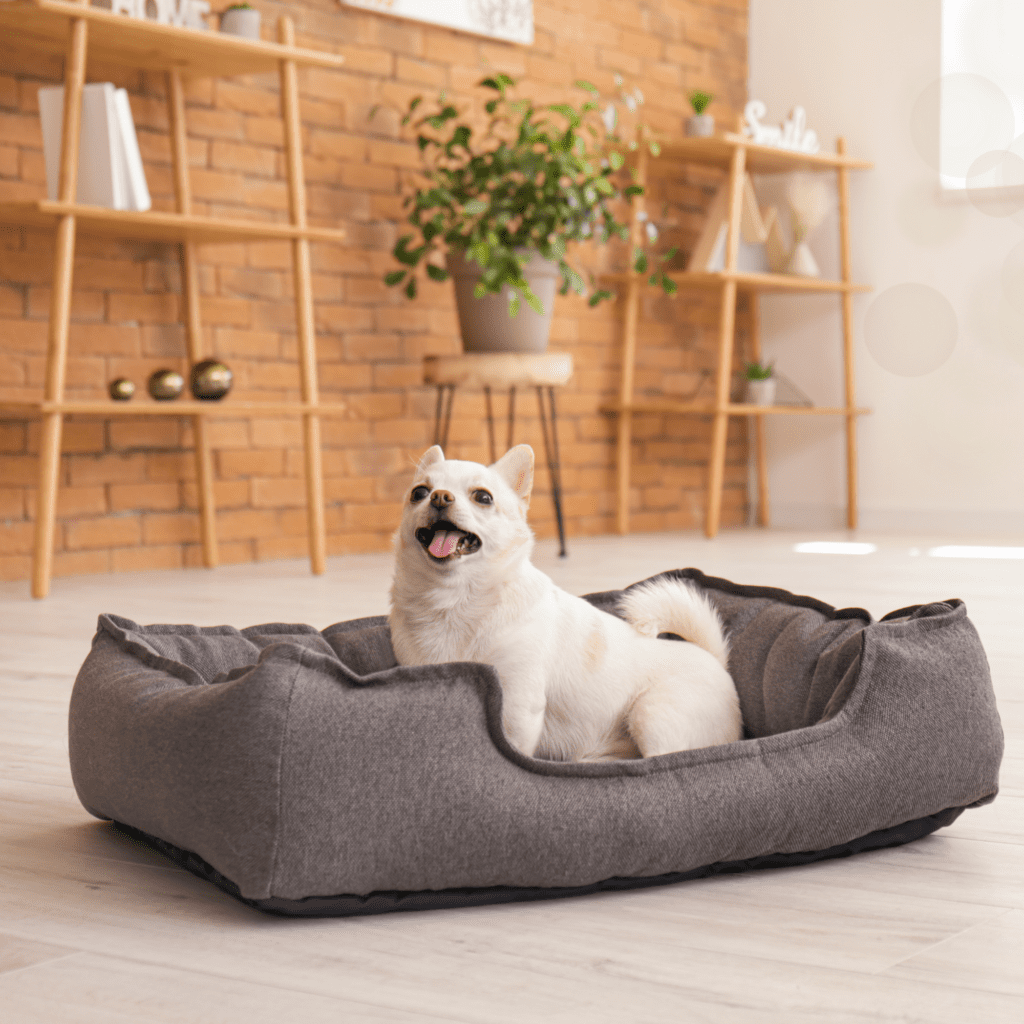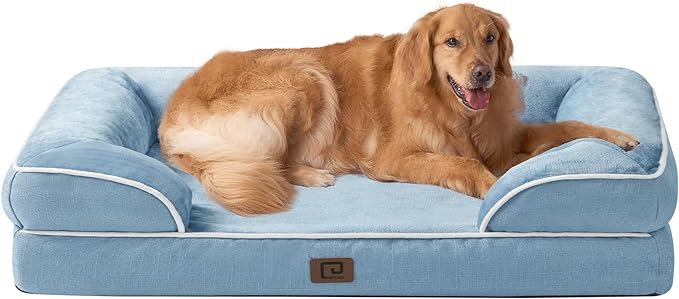This “The Best 10 Orthopedic Dog Beds for Joint Support” post may contain affiliate links, which means I’ll receive a commission if you purchase through my link, at NO EXTRA COST TO YOU
The Best 10 Orthopedic Dog Beds for Joint Support
Orthopedic dog beds are not just a luxury; they are a necessity for many dogs, especially as they age or if they suffer from joint issues. These beds provide the necessary support to alleviate pain, promote better sleep, and improve overall quality of life. In this comprehensive guide, we will explore everything you need to know about orthopedic dog beds, including their benefits, features to look for, and how to choose the best one for your dog. By understanding the importance of these specialized beds, you can make an informed decision that will contribute to your dog’s comfort and health.

Why Orthopedic Dog Beds Are Essential
As dogs age, their bodies undergo several changes, much like humans. Joint pain, arthritis, and hip dysplasia are common issues that older dogs face. However, even younger dogs or those with certain breeds prone to joint problems can benefit from the additional support that orthopedic beds provide. Because orthopedic beds are designed to offer superior comfort and support, they help reduce pressure on joints and ensure that your dog sleeps more comfortably.
Moreover, these beds are not just for older or ailing dogs. Active dogs, who may experience muscle soreness after a day of play, can also benefit from the cushioning and support offered by orthopedic beds. Since quality sleep is essential for healing and overall well-being, an orthopedic bed can significantly impact your dog’s health and happiness.
Key Features of Orthopedic Dog Beds
When shopping for an orthopedic dog bed, you should pay close attention to several key features. First and foremost, the bed should contain high-density foam, such as memory foam or orthopedic foam. This type of foam conforms to your dog’s body shape, providing even support and reducing pressure on sensitive areas like the hips, elbows, and shoulders. Unlike regular foam, orthopedic foam retains its shape and doesn’t flatten over time, ensuring long-lasting comfort.
Another important feature is the bed’s size. You must choose a bed that is large enough for your dog to stretch out fully, yet cozy enough to provide a sense of security. Measuring your dog from nose to tail and adding a few extra inches will help you select the right size. Furthermore, consider the thickness of the bed. A thicker bed offers more support, especially for larger or heavier dogs.
In addition to foam quality and size, the bed’s cover material also plays a crucial role in your dog’s comfort. Look for beds with covers made from durable, easy-to-clean fabrics. Waterproof covers are especially beneficial, as they protect the foam from spills, accidents, and drool. Additionally, a removable cover that can be machine washed makes maintenance easier and ensures the bed stays fresh and clean.
Benefits of Orthopedic Dog Beds
Orthopedic dog beds offer a multitude of benefits that go beyond just providing a comfortable place to sleep. For dogs suffering from joint pain or arthritis, these beds can significantly reduce discomfort by distributing weight evenly and alleviating pressure on painful areas. As a result, your dog will experience less pain and more restful sleep.
Another benefit is the prevention of pressure sores and calluses, which are common in dogs that spend a lot of time lying down. The supportive foam in orthopedic beds reduces the likelihood of these issues by cushioning the body and preventing prolonged pressure on the same spots.
Orthopedic beds also promote better spinal alignment. Proper spinal support is essential for dogs, as it helps maintain healthy posture and prevents strain on the spine and neck. This is particularly important for breeds prone to back problems, such as Dachshunds and Basset Hounds.
In addition, orthopedic beds can improve circulation by reducing pressure points and allowing blood to flow more freely. Enhanced circulation aids in the healing process, especially for dogs recovering from surgery or injury. Moreover, because these beds are so comfortable, they can help reduce anxiety in dogs who may otherwise struggle to relax and sleep.
TOP 10 ORTHOPEDIC DOG BEDS

How to Choose the Best Orthopedic Dog Bed
Choosing the best orthopedic dog bed involves considering several factors, such as your dog’s size, age, and specific needs. To start, evaluate the foam quality. Memory foam or orthopedic foam is essential, but you should also consider the foam’s density and thickness. A denser, thicker foam will provide better support and last longer, making it a worthwhile investment.
Next, think about your dog’s sleeping habits. Some dogs prefer to stretch out, while others like to curl up. Observing your dog’s preferred sleeping position will help you choose the right bed shape and size. Rectangular beds with bolsters are great for dogs who like to rest their heads on something, while flat beds work well for dogs who like to sprawl out.
The bed’s cover material is another important consideration. Dogs can be messy, so you should opt for a bed with a durable, washable cover. If your dog is prone to accidents, a waterproof cover is a must. Additionally, some covers come with anti-slip bottoms, which can be useful if you plan to place the bed on a smooth surface.
Finally, consider any additional features that may benefit your dog. For example, some orthopedic beds come with heating elements, which can provide extra comfort for dogs with arthritis or joint pain. Others may have cooling gel layers, which are ideal for dogs who tend to overheat.
Maintaining Your Orthopedic Dog Bed
Maintaining your orthopedic dog bed is crucial for ensuring it remains comfortable and hygienic. Start by regularly washing the bed cover. Most covers are machine washable, making it easy to keep the bed clean. However, always check the manufacturer’s instructions to ensure you are cleaning it properly.
In addition to washing the cover, you should also spot clean the foam if needed. Use a mild detergent and water, and avoid saturating the foam, as it can take a long time to dry. Air drying the foam is best, as machine drying can damage the material.
Another tip is to rotate the bed occasionally. Rotating the bed ensures even wear and prevents the foam from developing indentations where your dog frequently lies. This practice extends the life of the bed and maintains its supportive properties.
Conclusion
In conclusion, orthopedic dog beds are an essential investment for any dog owner who wants to provide the best comfort and support for their furry friend. These beds offer numerous benefits, from alleviating joint pain to improving sleep quality and overall health. By carefully selecting a bed with the right features—such as high-density foam, appropriate size, and durable cover—you can ensure your dog enjoys all the advantages of an orthopedic bed. Regular maintenance, including washing the cover and rotating the bed, will keep it in top condition for years to come. Ultimately, your dog will thank you for the thoughtful care and attention to their comfort and well-being.
© Copyright 2024. All rights reserved.














